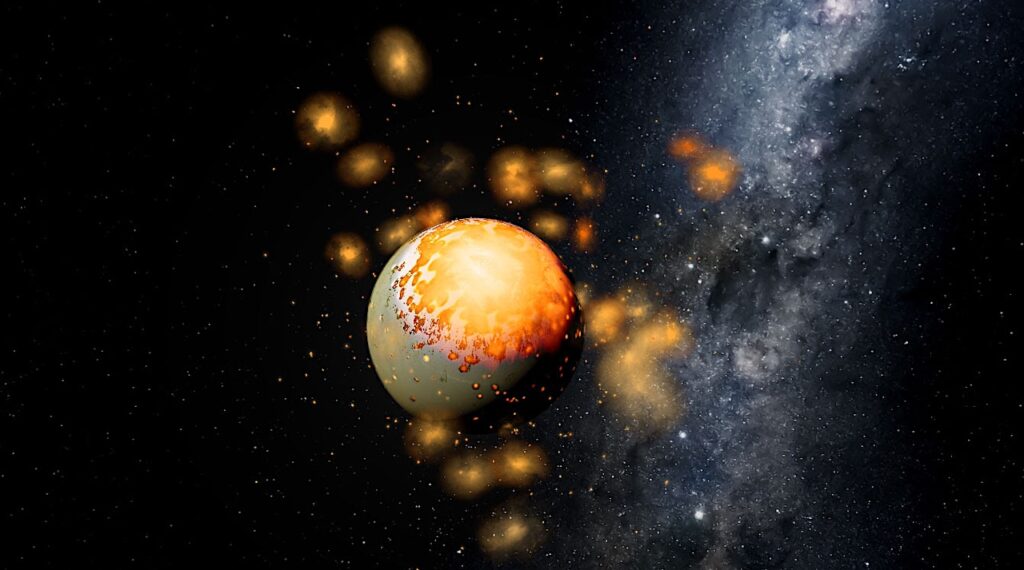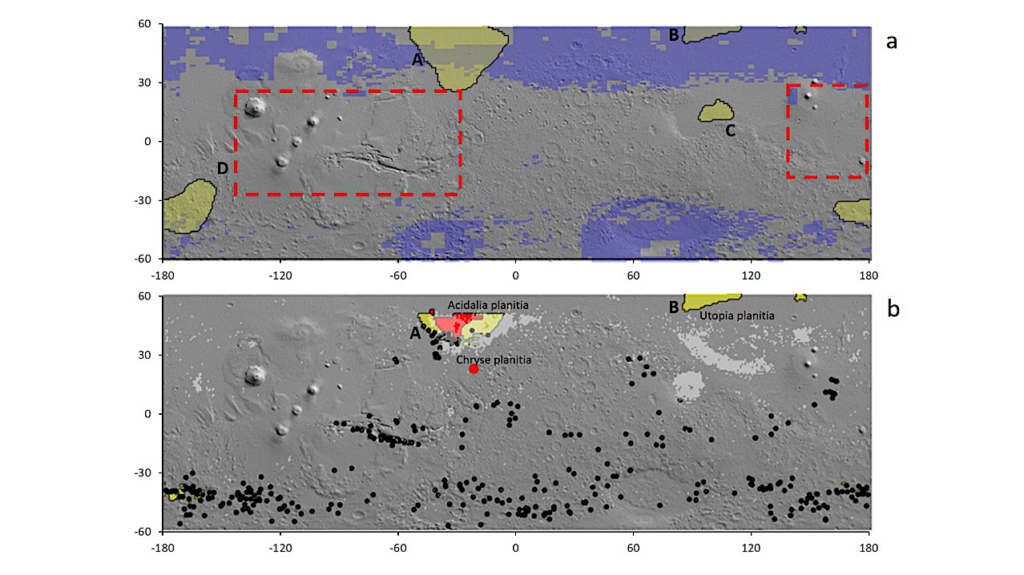The Origin Of Mercury’s Structure and Chemical Composition and Their Astrobiological Implications

Mercury can be categorized as either an endmember or an outlier planet due to its unusually large iron core, constituting approximately 70% of its total mass. The origin of this metal enrichment remains uncertain and may be ascribed to the characteristics of its original building blocks or the stripping of a portion of its mantle due to significant impacts.
Nevertheless, recent findings from the MESSENGER mission, which orbited Mercury, indicate a volatile enrichment on the planet’s surface, characterized by high concentrations of elements such as sulfur, carbon, potassium, sodium, and chlorine. These findings underscore the retention of volatile elements despite Mercury’s highly energetic accretion history. Furthermore, the MESSENGER mission confirmed that Mercury formed within an environment deficient in oxygen, where unusual mineral phases, including calcium- and magnesium-bearing sulfides, can stabilize and complicate phase equilibria.
Chondrites are considered primitive meteorites that preserve the chemical composition of the early solar system, serving as proxies for the materials that comprised planetary building blocks. Among these meteorites, enstatite chondrites exhibit the closest resemblance to Mercury due to their formation under low oxygen fugacity conditions and the presence of calcium- and magnesium-bearing sulfides.
In this presentation, we will investigate Mercury’s bulk chemical composition by combining experimental data with spacecraft observations of its surface geochemistry. These resulting compositions will then be compared to those of chondrites in order to assess whether Mercury accreted building blocks similar to chondrites.
Additionally, we will explore the various stages of Mercury’s differentiation into crust, mantle, and core by analyzing experimental data generated under high pressure and temperature conditions. Our results will shed light on how reduced conditions and the presence of sulfide phases can influence the behavior of heat-producing elements such as uranium, thorium, and potassium.
These findings hold significant implications for the generation of internal radioactive heat. Ultimately, our research will be situated within the broader context of the structure of the solar system and its chemical trends, offering insights into the chemical connections between planets and their host stars.
more information on Zoom presentation 10/24/2023 3:00pm PST
Astrobiology








